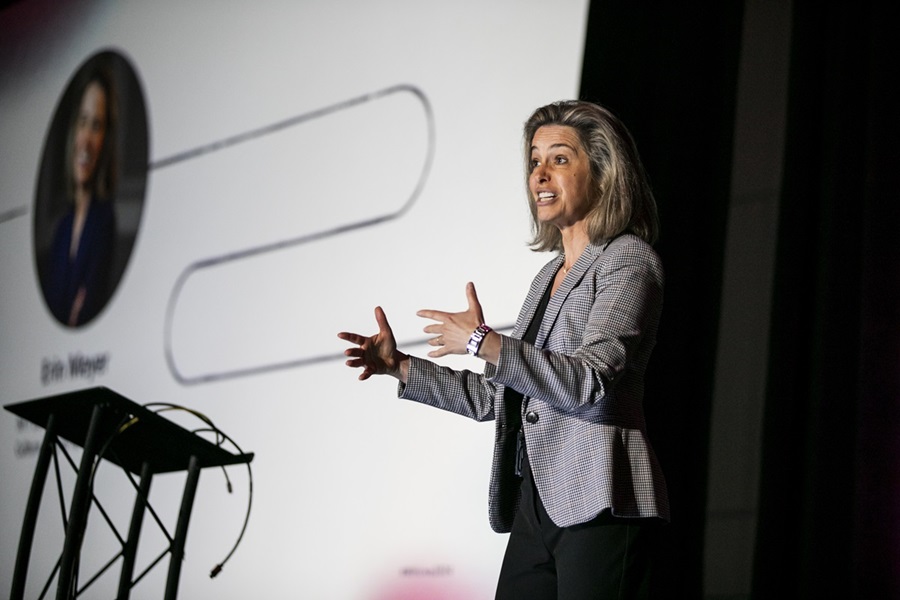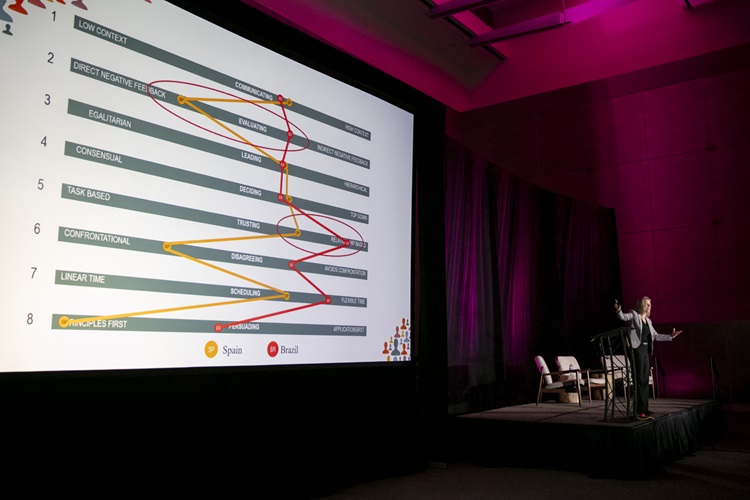The Culture Map: How to Navigate a Complex and Global Workplace

Culture.
It’s a simple, seven letter that carries a major significance – both in the world and in the world of work.
Culture is typically defined as customs shared by a particular nation, people, or social group, but, in a broader sense, culture is behavior that has been cultivated. It stems from an accumulation of experience that is socially transmitted, passed on from one generation to the next, evolving over time.
When it comes to culture, today’s companies do not have the luxury of long-term evolution and natural selection. Amid technological progress, changing workplace dynamics, and increasingly diverse demographics, the importance of company culture has become paramount to success. Ninety percent of executives, in fact, sayOpens in a new tab that the importance of company culture is increasing in today’s market.
With the workplace becoming ever-more global and virtual, it’s up to companies to ask themselves: How can we evolve workplace culture to inspire connection, drive innovation, and promote adaptability? How can we consider multiple cultural influences when building high-performing, inclusive, and effective teams across geographies? And, most importantly, how can we cultivate an environment where employees – and the business as a whole – thrive?
The answer lies in what renowned author and researcher Erin Meyer calls “the culture map.” In her bestselling book of the same name, Meyer provides a new way forward, with vital insights for working effectively and sensitively in a new global marketplace.
During Workhuman Live 2024Opens in a new tab in Austin, TX, HR’s most innovative and insightful conference, Meyer led HR practitioners and organizational leaders through ways to build resilient, effective cultures in an ever-evolving business landscape.
Meyer will again take the stage at Workhuman Live ForumOpens in a new tab in London, June 4, 2024, where she will keynote the show and equip leaders with the strategies they need to navigate a complex, global workplace.
Let’s look at the key insights shared during Workhuman Live in Austin – and what to expect in London:
The culture map
Based on her research at INSEAD, one of the leading international business schools, Meyer has charted an 8-scale culture map focused on helping the world’s most successful leaders navigate the complexities of cultural differences in a global environment. The prevailing sentiment of the culture map is that even culturally informed managers have little understanding of how culture impacts global interaction.

To that end, Meyer has plotted eight areas on the culture map: communicating, evaluating, leading, deciding, trusting, disagreeing, scheduling, and persuading. These eight areas are based on decades of academic research into culture from multiple perspectives, as well as Meyer’s own research, validated by thousands of executives who have confirmed or corrected the findings.
Understanding how varied countries and cultures view these areas helps leaders better engage with others from different cultures, building more cohesive and successful teams that bridge cultural gaps, transform differences into assets, and ultimately create thriving businesses.
During Workhuman Live Austin, Meyer walked leaders through the culture map – in essence, a visual representation of how these eight areas are typically handled across the 20–30 countries represented on the map. By comparing the position of one nationality relative to another in each of these eight areas, leaders can decode how culture influences day-to-day interactions.
Let’s look at couple of examples:
Communicating
When discussing the “communicating” area of the 8-point scale, Meyer introduced the concept of “low vs. high-context cultures,” a metric developed by American anthropologist Edward Hall.
In a low-context culture, good communication is precise, simple, explicit, and clear. Messages are understood at face value – and repetition is used for clarification, as is putting messages in writing. In other words, low-context cultures assume a low level of shared reference. The U.S. is an example of a low-context culture.
When building trust in low-context cultures, it’s important for leaders to consider if they’re working in a task-based or relationship-based culture. If the former, leaders can skip the small talk and focus on the business at hand; if the latter, more non-work talk is needed to get to know colleagues on a personal level.
High-context cultures, on the other hand, rely on shared knowledge. Effective communication is sophisticated, nuanced, and layered. Messages are often implied but not plainly stated – i.e., less is put into writing and more is left to interpretation, meaning understanding may depend on reading between the lines.
In high-context cultures like China and Brazil, there is more value and emphasis placed on building trust and personal relationships. These relationships are commonly built on face-to-face interactions, as well as things left unsaid such as cultural norms, body language, and the way things are presented.

Whether dealing with low or high-context cultures, Meyer emphasized that communication styles are, of course, influenced by regional, generational, and organizational differences – as well as shaped by the individual. The key is to have both an appreciation of cultural differences and respect for individual differences.
Evaluating
All cultures believe that criticism should be given constructively, but the definition of “constructive” varies greatly country by country. In other words, constructive feedback in one culture can be perceived as destructive in another.
Meyer’s 8-point scale measures a preference for frank versus diplomatic negative feedback. The “evaluating” metric is often confused with the “communicating” metric, but many countries have different positions on the two scales. The French, for example, are high-context communicators relative to Americans, yet they are more direct in their criticism. Spaniards and Mexicans are at the same context level, but the Spanish are more frank when providing negative feedback.
When providing feedback to colleagues from other countries, Meyer stressed the importance of understanding which form of feedback those individuals are most familiar with to have the biggest impact – and to build trust, rapport, and effective collaboration across geographies.
Final thoughts
In an increasingly global marketplace, it’s more important than ever to foster cross-cultural collaboration – and this involves having a deep understanding and appreciation of cultural differences.
During Workhuman Live Austin, bestselling author Erin Meyer shared her adept understanding of the international workplace, providing anecdotes and real-life stories drawn from her broad range of experiences and research evolved through the years. These are useful lessons for business leaders to consider both now and into the future.
About the author
Stacy Thompson
Stacy Thompson is senior director of content strategy & activation at Workhuman. A lover of language, Stacy focuses on bringing company stories to life from ideation to execution. A Midwestern native, Stacy lives in Billerica, MA with her husband, two kids, and two cats – and spends her time outside of work running, skiing, writing, reading, and yoga-ing.